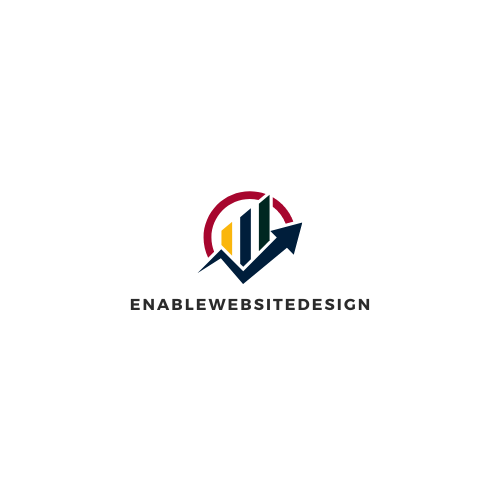Do you want to streamline your WordPress website, allowing your visitors to quickly access important information on your website? Adding a sticky header in WordPress is one of the easiest and most effective ways to accomplish this. Keep reading for all the tricks and techniques to make sure you take advantage of this incredibly useful feature.
Make Your WordPress Site Easier to Navigate with a Sticky Header
Making navigation easier and more comfortable for your visitors can be an imperative part of improving your website’s user experience. This is where having a sticky header can come to the rescue. Here’s how it works:
- A sticky header enables your website navigation bar to become “fixed” at the top of the page, meaning that it remains visible when the user scrolls down the page.
- This gives your visitors quick and easy access to your navigation links, so that they won’t have to scroll all the way back up to the top of the page just to get to a different page.
- This can be especially useful when navigating long pages with lots of scrolling necessary.
Integrating a sticky header on your WordPress site is easier than you think. All you have to do is install a plugin like Sticky Menu Or Anything on Scroll, which is highly rated and works well with both Elementor and Beaver Builder. Once installed and activated, the plugin adds a powerful new feature to customize the sticky header of your WordPress website. With this plugin, you can determine the exact position and size of your sticky header, as well as set the exact amount of scroll-down the page until it appears.
Preparing for a Successful WordPress
The installation of a WordPress sticky header is an important step to ensure a smooth and successful website browsing experience. Here’s what should be done before hitting that “Install” button:
Research: Prior to installation, it’s crucial to research and decide what type of sticky header will best align with your website’s goals. Look for features that support user experience such as responsiveness, ability to control text size, menu and background color, layered menus, and integration for analytics tools, among others.
Test and Debug: Once you have chosen the sticky header plugin, take some time to test and implement it on a local version of your site. This will provide the space to debug, adjust and troubleshoot any errors prior to fully installing it for the public version. Additionally, look for add-ons or extra features that can be added pre-production as well. Finally, use a staging plugin during installation to ensure minimal disruption and no unexpected problems.
Installing WordPress Step-by-Step
1. Adding a Plugin
Installing a sticky header in WordPress is as easy as adding a plugin! Head to the admin dashboard of your website and navigate to the Plugin’s page. Select the “Add New” link and search for the “Sticky Menu (or Anything!) on Scroll” plugin. Here are some additional features you can take advantage of:
- Create and Style a Menu the Way You Want
- Option to Add Logo to Header
- Change Sticky Header on Specific Pages
- Display Different Menus on Mobile Devices
Once you add the plugin, follow the prompts to activate it.
2. Customizing Your Header
Now you can begin customizing your sticky header! In the WordPress admin dashboard, select “Settings” and choose “Sticky Menu” for the next step. This is where you’ll set up the different parameters for your header, such as choosing a designated header menu. To really make your header stand out, try tinkering with the style options like font color, background color, font size, and logo opacity.
If you’re feeling adventurous, try enabling the Sticky “Off-canvas” menu. This gives you the chance to create an off-canvas menu when users scroll down your page, which offers a creative way to represent your page’s content.
You’re all set! Publish the changes and check out the Sticky Header on your site.
Finalizing the Installation for a Functional WordPress Sticky Header
Once you install and activate the WordPress sticky header plugin, it is almost ready to use. You just need to configure it to get the most out of it.
To finalize the installation of the sticky plugin, you need to perform the following steps:
- Step 1:Choose the desired primary and secondary menu.
- Step 2: Adjust the background color and other settings, if needed.
- Step 3: Turning on the sticky effect to make the header appear at the top of the website.
- Step 4: Completely customize the appearance of the sticky header, as you prefer.
- Step 5: Set the right height and width for the header.
Adjust the opacity and transparency levels until you get the desired sticky header. Test the header on different webpages to make sure it is working properly. You can also use third-party integration of the sticky header to further personalize and modify it.
Adding a sticky header to your WordPress website is an excellent way to keep your users engaged and ensure that important information is always visible, no matter how far they scroll! With a few simple steps, you can easily create and make sure all visitors have a more efficient, enjoyable experience when navigating your site.
We offer affordable WordPress website design services that helps you create a powerful online presence. Our team of experienced designers has extensive knowledge of WordPress and can create a custom wordpress website design with elementor pro that perfectly reflects your brand and message. We will work closely with you to understand your needs and goals, and provide recommendations for design and functionality based on our expertise.



